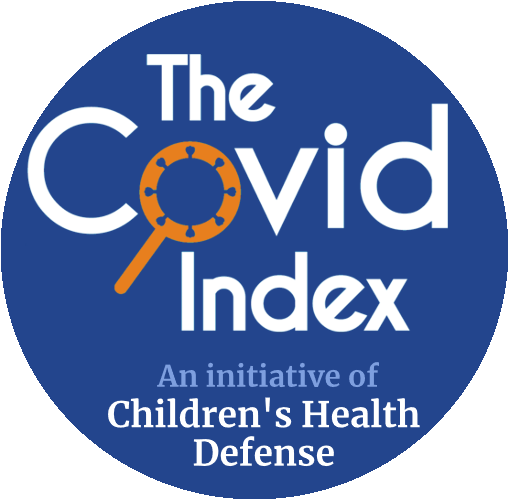Diego Montano is a post-Doctoral researcher with the Department of Population-Based Medicine at the Institute of Health Sciences at the Univeristy of Tübingen in Germany.
"1. Introduction
... Several reasons make the ongoing mass vaccination programmes in the EU and US against SARS-CoV-2 unique: (i) Prior to 2021, there were no vaccines against coronaviruses approved for human use, (ii) most vectorised and mRNA-based vaccines were still in clinical research phases for the treatment of different cancer types, protein-replacement therapies, regenerative medicine, and vaccine development and, (iii) similarly, there were few chimeric virus vaccines approved for human use, even though their application in oncology and veterinary practice was much more common. In addition, both mRNA and vectorised COVID-19 vaccines have been authorised in a fast-track mechanism (FDA) or accelerated assessment procedure (EMA) and, therefore, as investigational new drugs, there are still uncertainties regarding the magnitude of their potential to elicit adverse reactions. Hence, the aim of this contribution is to... estimate the absolute and relative risks of reporting serious adverse reactions associated with the COVID-19 vaccines reports in comparison to influenza vaccines used during 2020 and 2021 in adult populations...
3. Results
... [T]he relative risk estimates for some adverse reactions were large, for instance pruritus, rashes, presyncope, myocardial infarction, myocarditis, pericarditis, pulmonary embolism, dysgeusia, cerebral haemorrhage, hemiparesis, paresthesia, seizures, renal pain, respiratory distress, acute respiratory failure, deep vein thrombosis, increased fibrin D dimer, menstrual disorder, thrombosis or vaginal haemorrhage, among several others. On the other hand, some serious reactions such as cerebral thrombosis and cerebral venous (sinus) thrombosis have been reported much more frequently after COVID-19 vaccination (combined mRNA and adenovirus-vectored vaccines) in comparison to influenza vaccines among adults. For instance, whereas 1229 and 157 cases of cerebral venous sinus thrombosis have been reported so far after COVID-19 vaccination, no cases have been reported for influenza vaccines in both EudraVigilance and VAERS, respectively...
4. Discussion
... The findings indicate a temporal relationship between vaccination and death events, since most reported serious adverse outcomes including death, hospitalisations, and life-threatening reactions are occurring within the first 7 days post-vaccination.. [T]here is a large excess risk of death, hospitalisation and life-threatening reports for all COVID-19 vaccines in comparison to the influenza vaccines, and particularly large relative risks of thrombosis, coagulation and sexual organs reactions associated with COVID-19 vaccines. Hence, it is clear that those reaction categories have a strong signal in both reporting systems...
Although EMA and FDA have recognised so far about 30–40 adverse reactions following COVID-19 vaccination... the present findings indicate that there are multiple adverse reactions which have not been considered in the EMA and FDA product information sheets such as pulmonary, gastrointestinal, haemorrhage, neurological, sexual organs reactions, and thrombosis..
4.1. Potential Pathophysiological Mechanisms of Adverse Reactions
... [T]he biological plausibility of the adverse reactions following COVID-19 vaccination can be summarised by the action of at least three major pathophysiological mechanisms. First... the nucleic-acid-based pharmaceutical technology on which the COVID-19 vaccines are based upon elicits potent immune responses via Toll-like receptos (TLR), interleukins (IL) IL-6, IL-12, interferon type 1 (IFN-1), tumour necrosis factor α (TNFα), pattern recognition receptors, dendritic cell maturation, induction of CD4+ and CD8+ T cell responses, among others). At the same time, however, such potent immune reactions may also increase the risks of pathophysiological mechanisms related, for instance, to tissue and organ lesions and thromboembolic events... [T]his may result in an increased likelihood of an acute shock-syndrome due to a cytokine cascade leading to disseminated intravascular coagulation, acute respiratory distress and multiorgan failure...
The second pathway is related to the known pathogenicity of the spike S of SARS-CoV-2... The spike S protein, expressed in both nucleic acid technologies of the COVID-19 vaccines reviewed here, is not only a potent activator of the alternative pathway of complement which may contribute to the endothelial damage observed in COVID-19 patients, but also an enhancer of platelet aggregation and thrombus formation. In addition, the spike subunit S1 can cross the blood-brain barrier and is taken up by the neural cells, the lung, liver, kidney and spleen... Finally, concerning the mRNA platform, a third pathway is related to the role of the lipid nanoparticles themselves used to complex the naked synthetic mRNA... [T]hey still may elicit pathogenic anaphylactoid reactions by complement activation (68–70) and enhanced platelet aggregation."
Copyright © 2022 Montano.
This is an open-access article distributed under the terms of the Creative Commons Attribution License (CC BY). The use, distribution or reproduction in other forums is permitted, provided the original author(s) and the copyright owner(s) are credited and that the original publication in this journal is cited, in accordance with accepted academic practice. No use, distribution or reproduction is permitted which does not comply with these terms.
